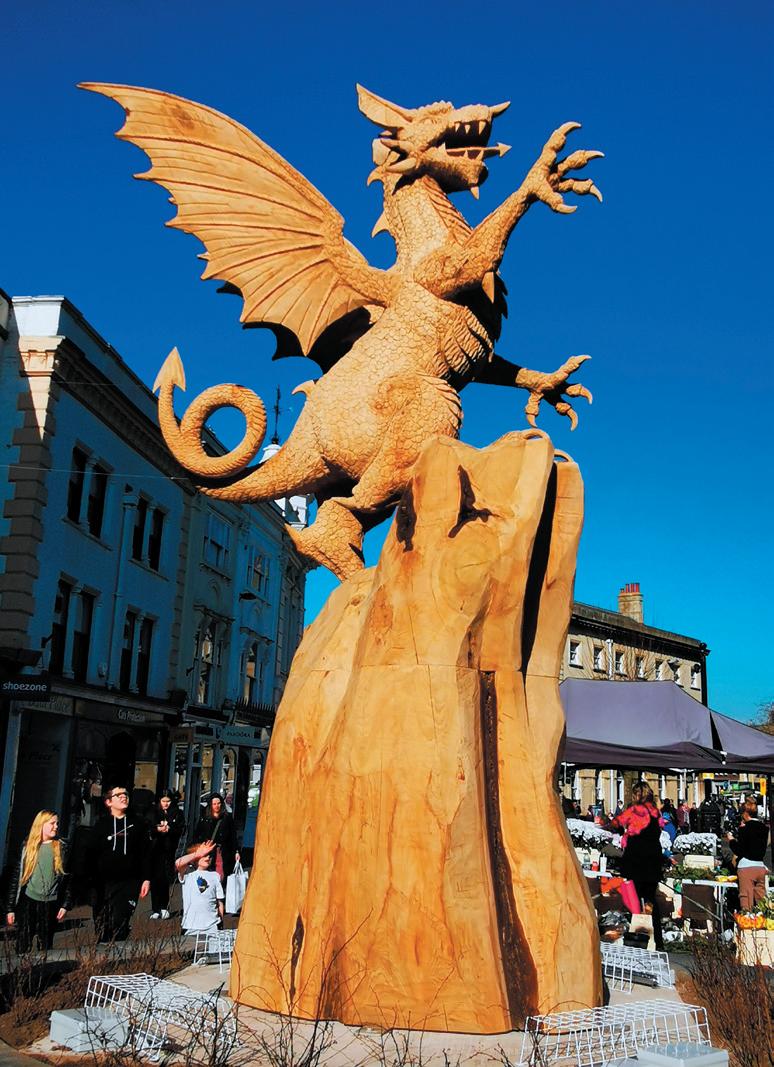
3 minute read
Gennaro Contaldo’s Easter Leg of Lamb
Introduction
When it comes to Easter feasts, you can always look to Italy for a sublime celebration of food, family and faith. This recipe for Gennaro Contaldo’s Easter leg of lamb is the perfect dish to serve to your extended brood over the long weekend.
Advertisement
Method
1. Preheat the oven to 200°C/ gas mark 6. Slash the lamb with a sharp knife and rub all over with salt, pepper and a little extra virgin olive oil. Push half the olives and four anchovies into the slashes. Place in a roasting dish together with wine, garlic, shallots, rosemary and remaining anchovies.
2. Reduce the oven temperature to 150°C/gas mark 2 and roast the lamb for 1 hour 30 minutes.
If necessary, cover with tin foil halfway through cooking. Baste throughout and if necessary, add a glass of hot water.
3. About 10 minutes before the end of cooking time, add the peas.
4. Remove from the oven, leave to rest for 5 minutes, place on a board, carve and serve with the vegetables and juices.
Ingredients
(serves 4)
• 1.2kg leg of lamb
• Salt & pepper
• Sprig of rosemary
• A little extra virgin olive oil
• 150ml white wine
• 300g baby onions or shallots
• 100g black olives, pitted
• 8 x anchovy fillets, roughly chopped
• 2 x garlic cloves, left whole, crushed
• 320g fresh or frozen peas
Top Tip
• If using fresh peas be sure to weigh them after they have been shelled and cleaned.
• Keep an eye on your lamb while it is in the oven to ensure it doesn’t dry out. Resting is also essential to maintaining the tenderness and moistness of your meat.

The first ‘seven wonders of the ancient world’ list was made more than 2,000 years ago, but over the course of many centuries most of these wonders were destroyed. So in 2001, the New7Wonders Foundation set out to find a new list for the modern era, asking over 100 million people for their votes. The result was seven new wonders of the world, spanning four continents. Which are on your bucket list?
Machu Picchu, Peru
Perched high in Peru’s Andes mountain range, Machu Picchu is an ancient Inca citadel dating back to the fifteenth century. The mysterious maze of buildings, plazas and platforms was only discovered 100 years ago and continues to bewilder historians and archaeologists –who are still to this day struggling to understand its original purpose.

Taj Mahal, India
The Taj Mahal is India’s most iconic symbol. Shah Jahan, king of the Mughal empire from 1628 – 1658, employed over 20,000 people to build the mausoleum as a monument to his beloved wife, who died in childbirth. A marble tomb in the centre is surrounded by forty-two acres of grounds, where gardens, a mosque, guest house and pool complete the complex.

The Great Wall of China, China
The world’s largest and most impressive man-made structure, the Great Wall was built to protect China from invasion and to guard its Silk Road trade. Taking a staggering 2,000 years to finish, the structure snakes its way along mountain ridges, valleys and hills for over 13,000 miles.

Petra, Jordan

Half-carved into vibrant red, white, pink and sandstone cliff faces, the prehistoric city of Petra in Jordan was ‘lost’ to the Western world for hundreds of years. Once a thriving trading centre and the ancient capital of the Nabataean empire, the city sat empty and in near ruin for centuries before being rediscovered by a European traveller in the 1800s.
The Colosseum in Rome, Italy
An impressive feat of engineering, The Colosseum in Rome was built in the first century. The amphitheatre was once capable of holding 50,000 spectators, who watched a variety of events – including gladiator fights. According to some estimates, about 500,000 people died in the Colosseum, and so many animals that some species became extinct!

Christ the Redeemer statue, Rio de Janeiro, Brazil

The iconic emblem of Brazil, Christ the Redeemer rises over thirty metres on the top of Mount Corcovado in Rio de Janeiro. Made from reinforced concrete and clad in over six million soapstone tiles, this totemic statue of Jesus is actually the largest Art Deco sculpture in the world.
Chichen Itza, Mexico
Deep in the Mexican state of Yucatán lies Chichen Itza, a historic Mayan city built between the ninth and twelfth centuries. Constructed by the pre-Columbian Mayan tribe Itzá, the city includes a series of monuments and temples – the most famous being El Castillo. A testament to the Mayans’ astronomical abilities, the structure features 365 steps, one for every day in the solar year.











